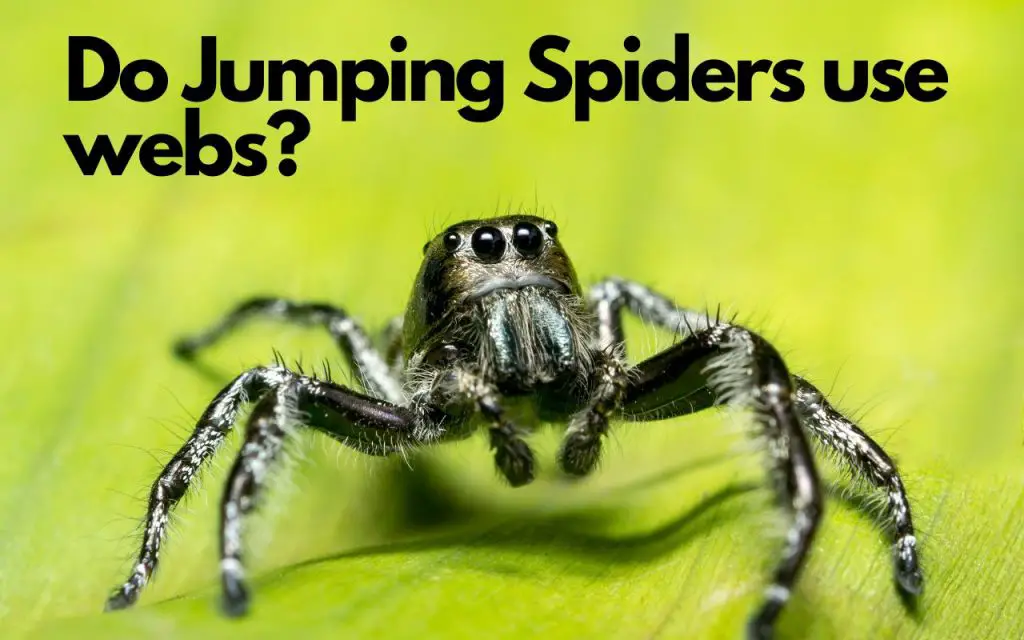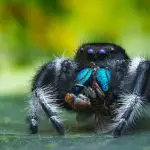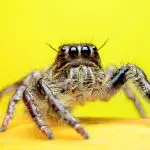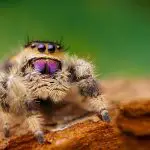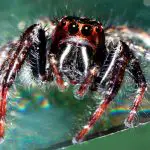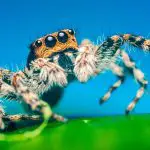All spiders produce silk – but not all of them use it to make a web. Jumping Spiders, for example, use it for some pretty cool stuff, from getting to new locations to making their very own safety wire. So if you’re wondering: Do Jumping Spiders make webs? The answer is no, but they do make constant use of silk.
In this article, we’ll take a look at how Jumping Spiders get along without the use of webs, and the unusual ways in which they do nonetheless rely on silk…
Spiders without webs for hunting
There are a plethora of spider species on this planet, with over 45,000 recognized. But not all of them use the iconic spider web to catch their meals.
As someone who’s been mesmerized by these creatures for years, one of the most fascinating things I have come to learn is that not all spiders weave webs to trap their prey. Instead, some spiders, such as our spotlight species today, the jumping spider, have evolved unique hunting techniques that do not involve the creation of a web.
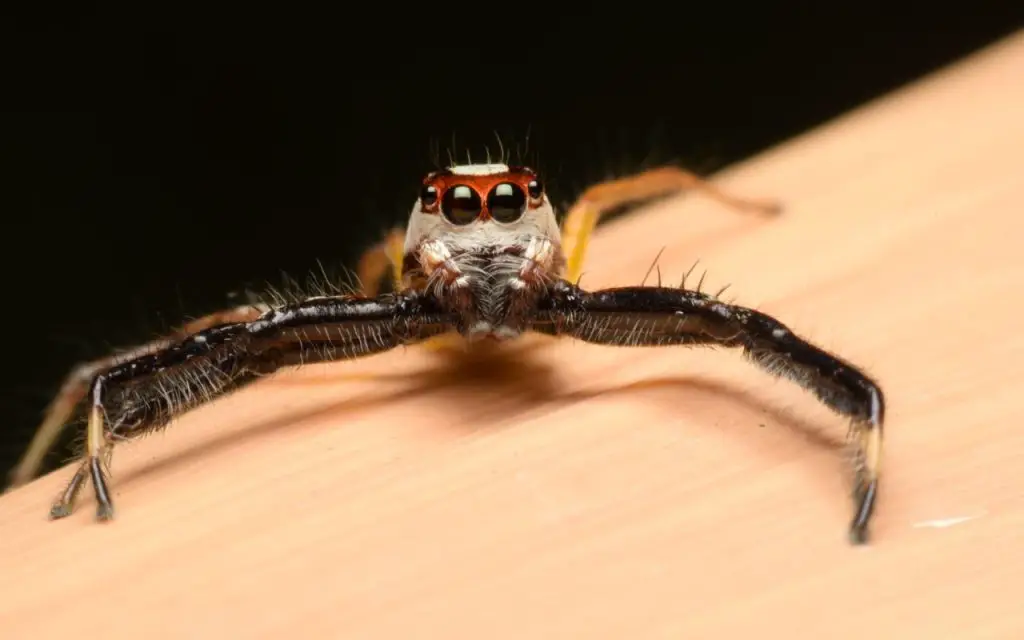
Do jumping spiders make silk?
Jumping spiders, or Salticidae, are known for their acrobatics, but the question arises: Do they produce silk? The simple answer is yes, they do. While jumping spiders are known for their hunting prowess rather than their web-weaving skills, they do, indeed, produce silk.
However, this silk isn’t primarily used for creating intricate, prey-catching webs like their orb-weaver cousins. Instead, the jumping spider uses its silk for safety lines when leaping great distances, to create daytime retreats or nesting dens, and for a process called ballooning, which I will explain in detail a bit later.
Jumping spider web type
It’s essential to clarify the misconception around the idea of ‘web’. When we think of spider webs, the image that usually comes to mind is the intricate, wheel-like structure often associated with spiders like the Garden Orb-weaver. However, not all spiders produce this type of web. So, if a jumping spider does produce silk, what type of ‘web’ does it create?
Jumping spiders, instead of building a web for hunting, use their silk to create what’s best described as a ‘safety line’ or ‘dragline’.
As they jump or move around exploring their environment, they lay down this silk line. Should they miss a leap or fall, this line aids them in climbing back up to their starting point, acting as a safety tether.
Ballooning with silk
Now let’s delve into one of the most fascinating uses of silk by jumping spiders: ballooning. This process allows the spider to catch a ride on the wind to travel long distances.
The spider will release a line of silk, which catches the wind and lifts the spider into the air, much like a kite. This technique is primarily used by young spiders looking to disperse and establish their own territories.
Do jumping spiders make nests?
Jumping spiders are architects in their own right. They use their silk to build snug, retreat nests, usually in leaves or under rocks. These nests are built not for hunting, but as places of rest and molting, and for females, a safe space to lay their eggs. The nests are usually simple, a tube of silk, but offer necessary protection from the elements and potential predators.
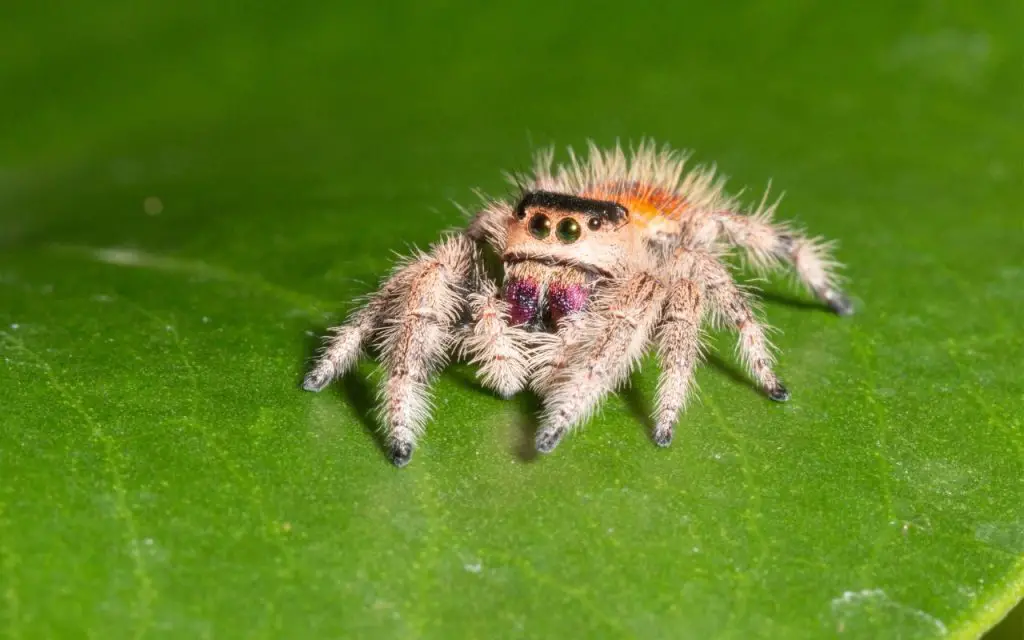
How do jumping spiders eat?
Now let’s look at how these amazing little creatures eat. Jumping spiders are daytime hunters with phenomenal eyesight. Scientists often describe them as “cursorial” hunters, which loosely means predators that chase down their prey on foot.
They stalk their prey like tiny, eight-legged tigers, slowly sneaking up on them before pouncing. Once they’ve caught their prey, usually small insects or other spiders, they inject venom to immobilize and begin the digestion process. The spider then consumes the liquified insides of their prey.
Table 1. Typical Prey Items for Jumping Spiders
| Prey Item | Description |
|---|---|
| Small Insects | Jumping spiders usually feed on small insects such as flies and mosquitoes. |
| Other Spiders | Jumping spiders are known to be cannibalistic, often feeding on other smaller spiders, including those of their own species. |
| Arthropods | Some larger species of jumping spiders can prey on small crustaceans and other arthropods. |
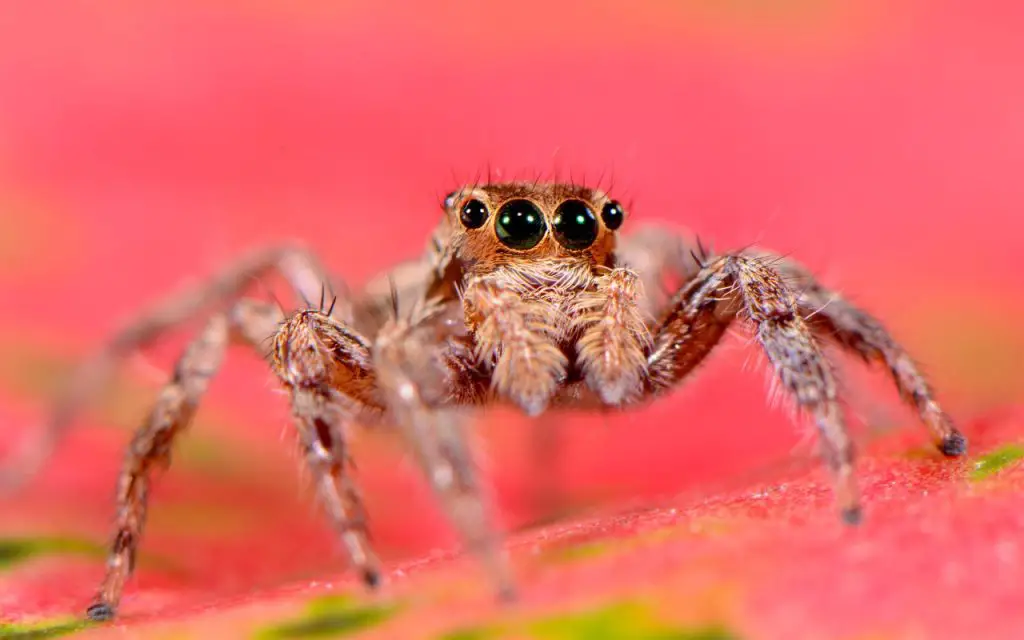
How long do jumping spiders live?
Jumping spiders, like most spiders, have relatively short lifespans. In the wild, they tend to live for about a year, though some females may live longer if conditions are right. In captivity, with a steady diet and no predators, they can live up to 2-3 years, though this can vary depending on the species and individual spider’s health.
Do jumping spiders make good pets?
I get asked this question often: Are jumping spiders good pets? Based on my personal experience, I would say yes, they do make fascinating pets. They’re active and highly curious during the day, which allows for plenty of observation and interaction.
They have distinctive, individual personalities, and their hunting antics never cease to amuse. Plus, their care requirements are pretty straightforward, which makes them a good choice for beginners. But remember, like any pet, they require commitment and proper care.
5 Fascinating Facts About Jumping Spiders
- Exceptional Vision: Jumping spiders have some of the best vision among invertebrates and use it to navigate their world, identify their prey, and even communicate with other spiders.
- Colorful Characters: Many species of jumping spiders are brightly colored and have intricate patterns. Some species even have iridescent scales, which can make them surprisingly beautiful.
- Courtship Dance: Male jumping spiders perform elaborate dances to attract females. These dances often involve complex leg movements and display of their bright colors.
- Small but Mighty: Despite their small size, jumping spiders can take down prey larger than themselves. They use their speed, precision, and venom to overcome their prey.
- Intelligent Hunters: Studies have shown that jumping spiders have high cognitive abilities for their size. They don’t just react to stimuli, but can plan and carry out complex hunting strategies.
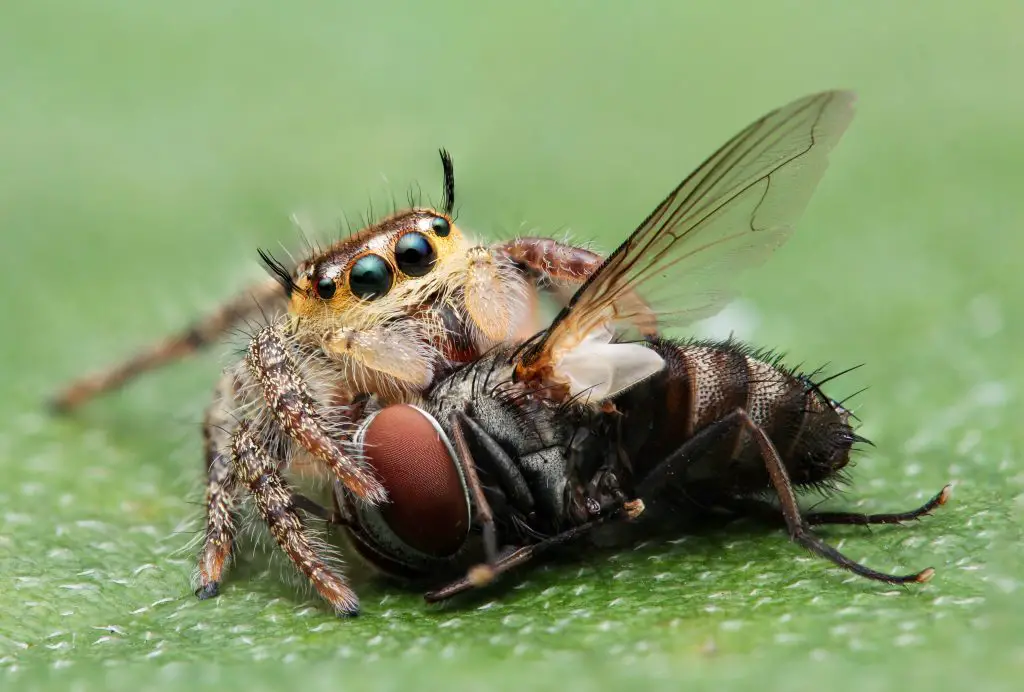
Do jumping spiders bite?
The thought of a spider bite can be unsettling for many. However, fear not! While jumping spiders can bite, they rarely do so unless provoked or threatened.
Even in those rare cases, their bite is usually no more painful than a bee sting, and their venom poses no threat to humans, unless an individual has an allergic reaction.
Do Jumping Spiders make webs? Conclusion…
So, to revisit our initial question, do jumping spiders make webs? Technically, they do produce silk and can create web-like structures, but not in the conventional sense we often associate with spiders. They do not create the classic, ornate webs used for trapping prey. Instead, they use their silk in practical and innovative ways, such as safety lines during their acrobatic leaps, creating nests, or even ballooning to new locations.

